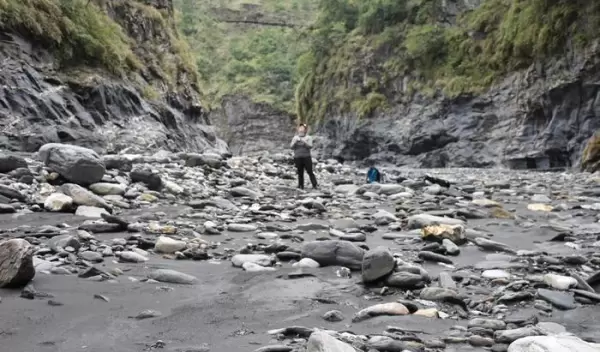
Drones capture new clues about how water shapes mountain ranges
Drones flying along miles of rivers in the steep, mountainous terrain of central Taiwan and mapping the rock properties have revealed new clues about how water helps shape mountains over geological time, according to a team led by Penn State scientists.
The U.S. National Science Foundation-supported researchers found a link between the size of boulders in the rivers and the steepness of the rivers. The link shows how rock properties can influence the relationship between tectonic processes happening deep underground and how mountainous landscapes change shape. They reported the results in the journal Science Advances.
"Over the course of a mountain belt developing, we're seeing differences in how rivers incise, or cut down into the bedrock, in the younger and older sections," said Julia Carr, lead author of the paper. "It means that as a mountain belt evolves, erosion is changing at the surface."
As tectonic plates collide and form mountain ranges, rocks that were previously buried in the Earth's crust are pushed to the surface in a process called uplift. The temperature and pressure that these rocks experience leads to variability in rock properties — like rock hardness or the spacing and orientation of fractures — that then affect how easily they are eroded by elements at the surface, the scientists said.
In Taiwan, the scientists found the main signature of rock strength of the mountains was the size of boulders in rivers, which were larger and stronger in locations where rocks had been buried deeper in Earth's crust. And the size of boulders correlated with the steepness of the rivers, which must be powerful enough to move the boulders downstream before eroding the mountain, according to the researchers.
"When the boulders in the channels are larger, the river needs to steepen to be able to erode at the same rate," said Roman DiBiase, co-author of the study. "This is because to erode rock, the sediment covering a river channel needs to move out of the way. The larger the boulders in the channel, the steeper the channel needs to be to move them."
The researchers turned to drones to avoid obstacles like hazardous river crossings and waterfalls while collecting data. During these surveys, they collected hundreds of thousands of measurements of river channel morphology and more than 22,000 measurements of boulders along roughly 18 miles of rivers.
